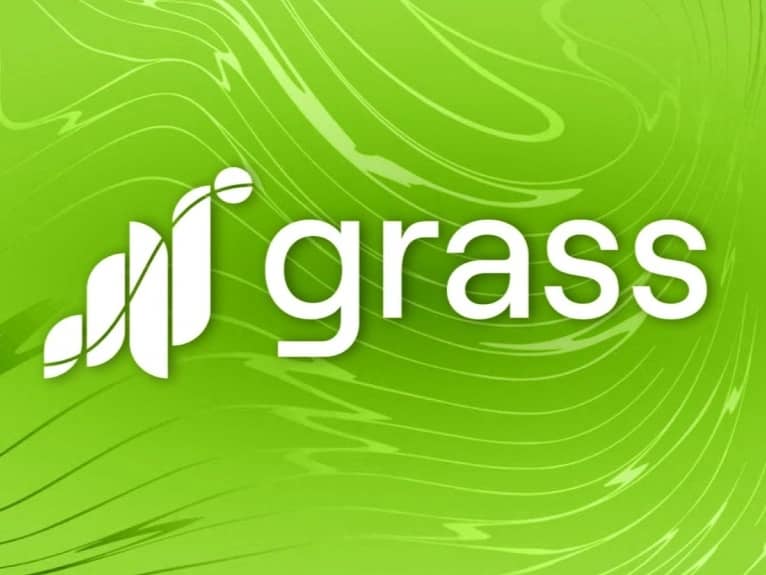Grass
Grass, sometimes known as 'Grass Network', is a platform that was founded by Andrej Radonjic and was launched on October 28th, 2024. Grass allows users to earn rewards by contributing their unused internet bandwidth to the Grass network. Designed to prioritize user ownership and control, Grass enables verified institutions and researchers to access the bandwidth needed for tasks like academic research, local price verification, and regional ad testing. [1] [6] [12]
Overview
Grass is a platform designed to redefine internet incentives by enabling individuals to contribute unused internet bandwidth to a decentralized network. Participants earn rewards while supporting data transformation processes that benefit research and institutional applications.
Built as a Layer 2 network on the Solana blockchain, Grass prioritizes scalability and speed. Its use of zero-knowledge proofs ensures data integrity and transparency, which benefits AI model training. Grass also emphasizes user privacy and cybersecurity by minimizing data collection and collaborating with cybersecurity leaders. Personal data is securely stored and limited to essential information, and users retain control over their shared bandwidth. By partnering with organizations like AMTSO and integrating rigorous security measures, Grass seeks to maintain a secure and trusted network for its participants.
Additionally, Grass incorporates environmentally sustainable practices, leveraging a Proof of Stake (PoS) consensus mechanism and an innovative Proof of Green (PoG) system. PoG rewards users for supporting green initiatives, aligning blockchain operations with ecological goals. [2] [3] [10] [11]
Ecosystem
The Grass ecosystem comprises several integral components that work together to ensure functionality, security, and user participation:
Grass App
This application allows users to share their unused internet bandwidth, earning rewards and participating in network growth, including applications in artificial intelligence.
Sovereign Data Rollup
A network infrastructure comprising nodes, routers, validators, a zero-knowledge processor, and a data ledger. It facilitates the secure sourcing and transformation of unstructured web data into structured datasets. [9]
Grass Points
Grass Points form the rewards system used within the Grass platform, allowing participants to earn points through usage and referrals.
Points are accrued in the following ways:
- Usage: Users earn points by actively using the Grass app and maintaining their network connection.2. Referrals
- Primary Referrals: When a user shares their referral link and it results in a successful download, they earn 20% of the referred user’s uptime points indefinitely.
- Secondary Referrals: If a referred user invites others, the original user earns 10% of the new invitee’s uptime points indefinitely.
- Tertiary Referrals: When someone in the secondary referral network invites others, the original user earns 5% of the third-level referee’s uptime points indefinitely.
Referral Bonuses
- New referrals receive a 5,000-point bonus after 100 hours of uptime.
- Referrers earn a 2,500-point bonus for each referral that achieves 100 hours of uptime.
Tiered System
The system features ranks, such as Iron and Titan, based on referral count, with higher ranks offering increased bonus points.
Epoch System
Grass Points are tracked within defined time periods, or epochs, allowing users to monitor their earnings via their dashboard.
This structure incentivizes app usage and network growth while fostering user participation. [4] [5]
Grass Nodes
Users operate Grass Nodes by sharing their unused internet bandwidth, increasing the network's capacity. In return, they earn GRASS tokens, fostering community ownership and engagement.
Validators
Validators uphold the network's integrity by verifying transactions and maintaining consensus on the blockchain. They are compensated with GRASS tokens for their role in preventing fraudulent activity.
Zero-Knowledge (ZK) Processor
This component enhances privacy and security by facilitating secure data transactions without disclosing sensitive information, addressing critical concerns around data confidentiality in digital environments. [12]
Use Cases
The GRASS network supports various applications that emphasize its role in the digital economy:
- AI Development: GRASS provides structured datasets for AI developers by utilizing users' collective bandwidth to source and process public web data. This decentralized approach democratizes access to data, enabling smaller developers to train AI models and compete with larger entities.
- Decentralized Data Access: Through its decentralized framework, GRASS allows secure and transparent access to datasets without dependence on centralized platforms. This ensures data reliability while giving users control over their contributions.
- Monetization of Internet Resources: The network enables users to earn GRASS tokens by sharing unused internet bandwidth. This creates an accessible method for individuals to generate additional income while contributing to the network's functionality. [12]
Tokenomics
Grass Token ($GRASS)
Grass utilizes GRASS tokens to support its Layer 2 Data Rollup infrastructure, emphasizing sustainability, incentivized participation, and transparency in AI development. The total supply of GRASS tokens is capped at 1 billion, ensuring a fixed supply within the ecosystem. [7] [8]
Allocation
The GRASS token distribution is structured across several key categories to support the network's development and sustainability:
- Community (30%): Reserved for rewarding users through initiatives such as airdrops, router rewards, and other incentive programs to promote network participation and growth.
- Foundation & Ecosystem Growth (22.8%): Managed by the foundation and guided by DAO governance, this allocation funds activities like network upgrades, partnerships, research, and development to scale and expand the ecosystem.
- Early Investors (25.2%): Designated for early backers, subject to a 1-year cliff and a subsequent 1-year vesting period. These tokens remain non-stakeable until fully vested.
- Contributors (22%): Allocated to core contributors, with a 1-year cliff followed by a 3-year vesting period. This includes current and future contributors integral to the network's operations and improvements. [12]
